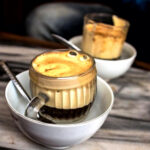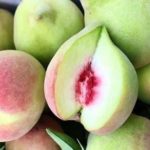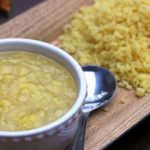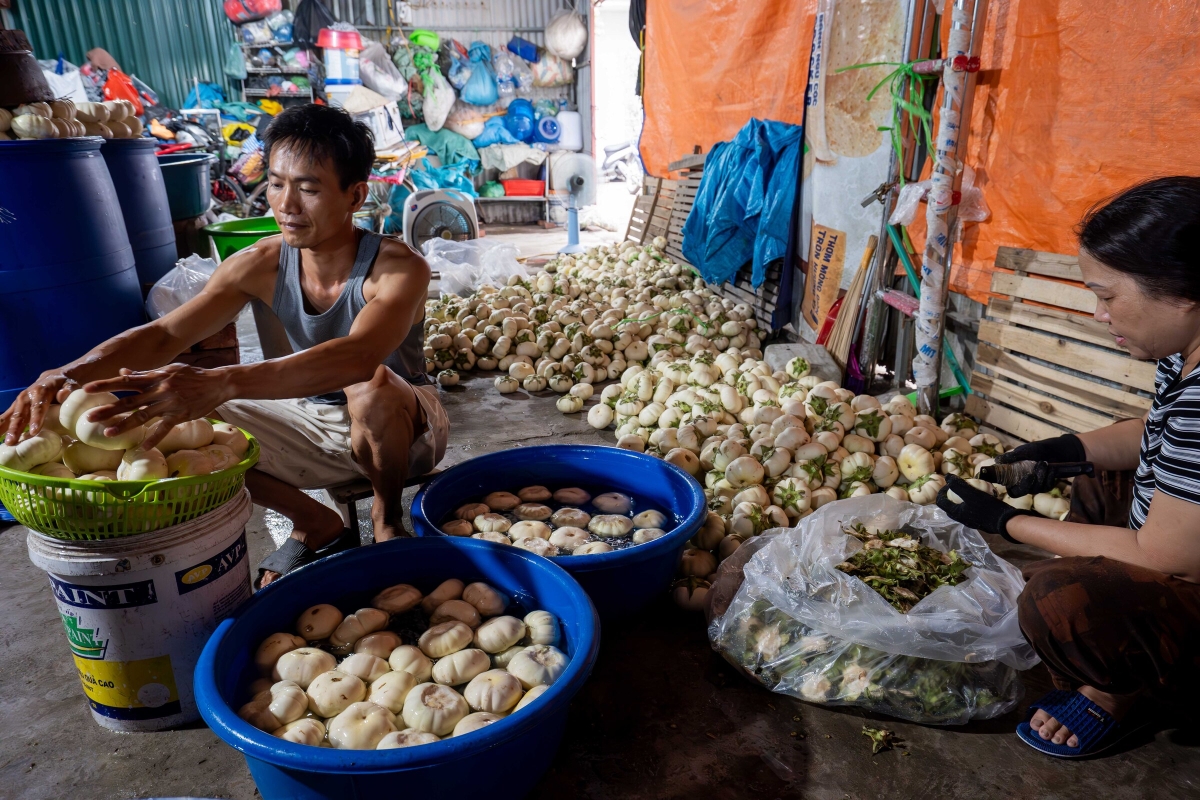
Khương Hạ Village, formerly located in the outskirts of the ancient capital of Thang Long, is now part of Khuong Dinh ward in Thanh Xuan district, Hanoi. Since the 17th century, the villagers of Khuong Ha have made their living by pickling vegetables, but this tradition has gradually faded, with many households switching to other, more lucrative occupations.
The family of Mr. Nguyen Thuan Dat is one of the nearly 20 households in the village that still practices this trade.
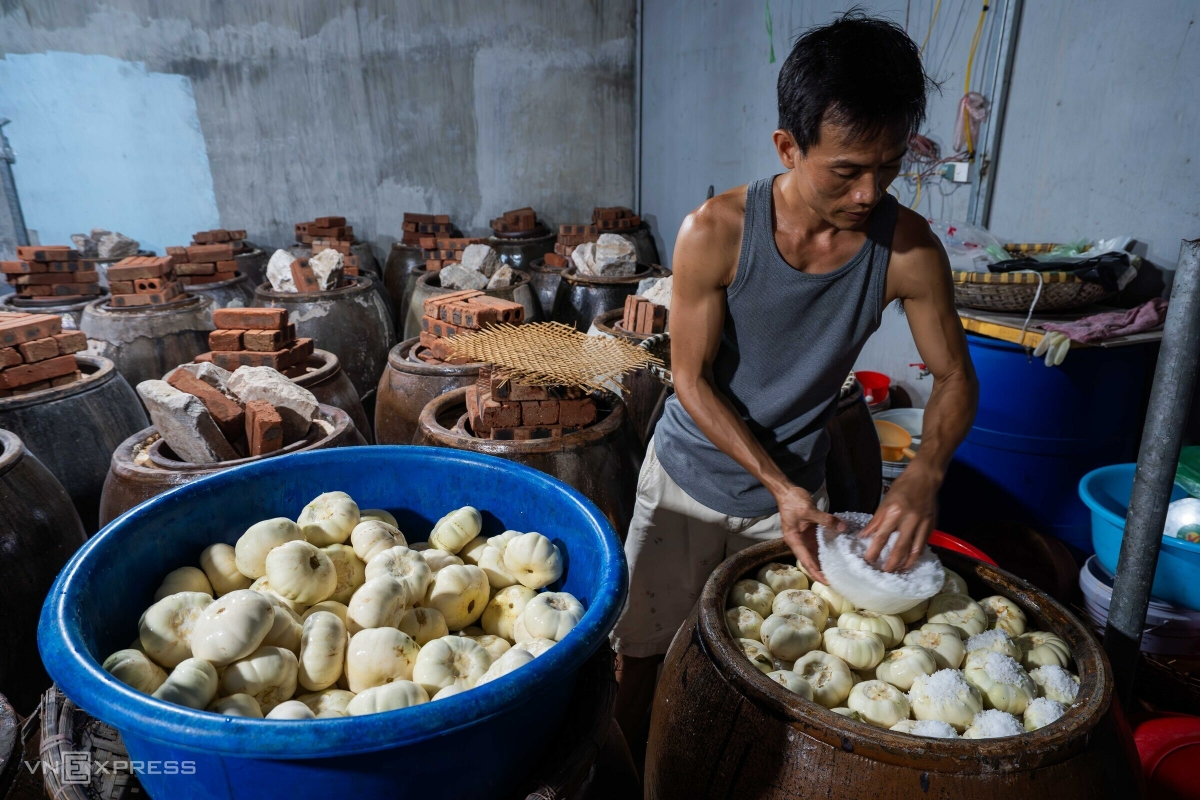
In the past, the village grew its own bitter melons, but farming land has diminished due to urbanization. Today, bitter melons are sourced from other localities such as Ba Vi and Dan Phuong.
Bitter melons are only available from March to September each year. When the season ends, the people of Khuong Ha Village turn to pickling Chinese cabbage and turnips.
At the peak of the season, a family can pickle up to 400-500 kg of bitter melons in a day, requiring the continuous labor of five people.
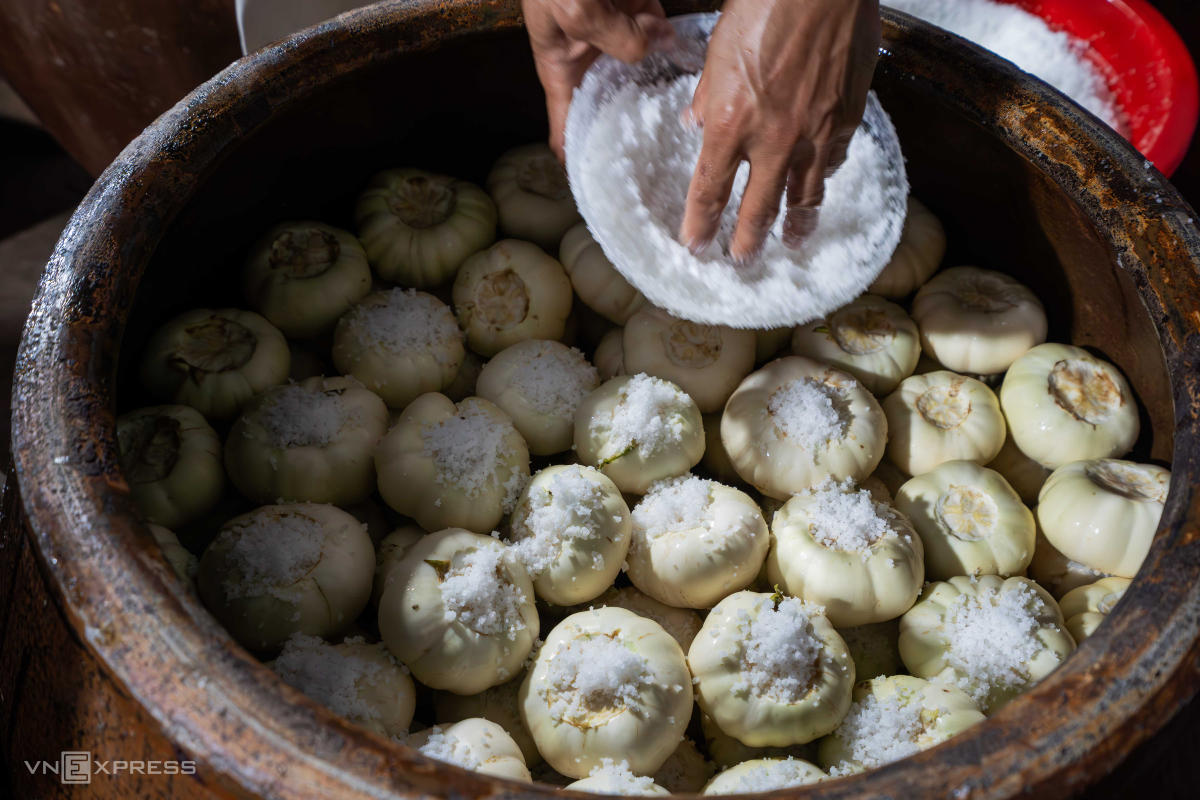
The melons are de-stemmed, washed, drained, and then immediately pickled. During the pickling process, the melons are layered in jars or vats, with a layer of salt sprinkled between each layer of melon. Depending on the weather, it takes about 30-45 days for a batch of pickled melons to be ready.
“During the summer, a Hanoi family’s meal is incomplete without dishes made from pickled melons, such as bitter melon salad with garlic and chili, served with crab soup or boiled vegetable soup,” said Dat.
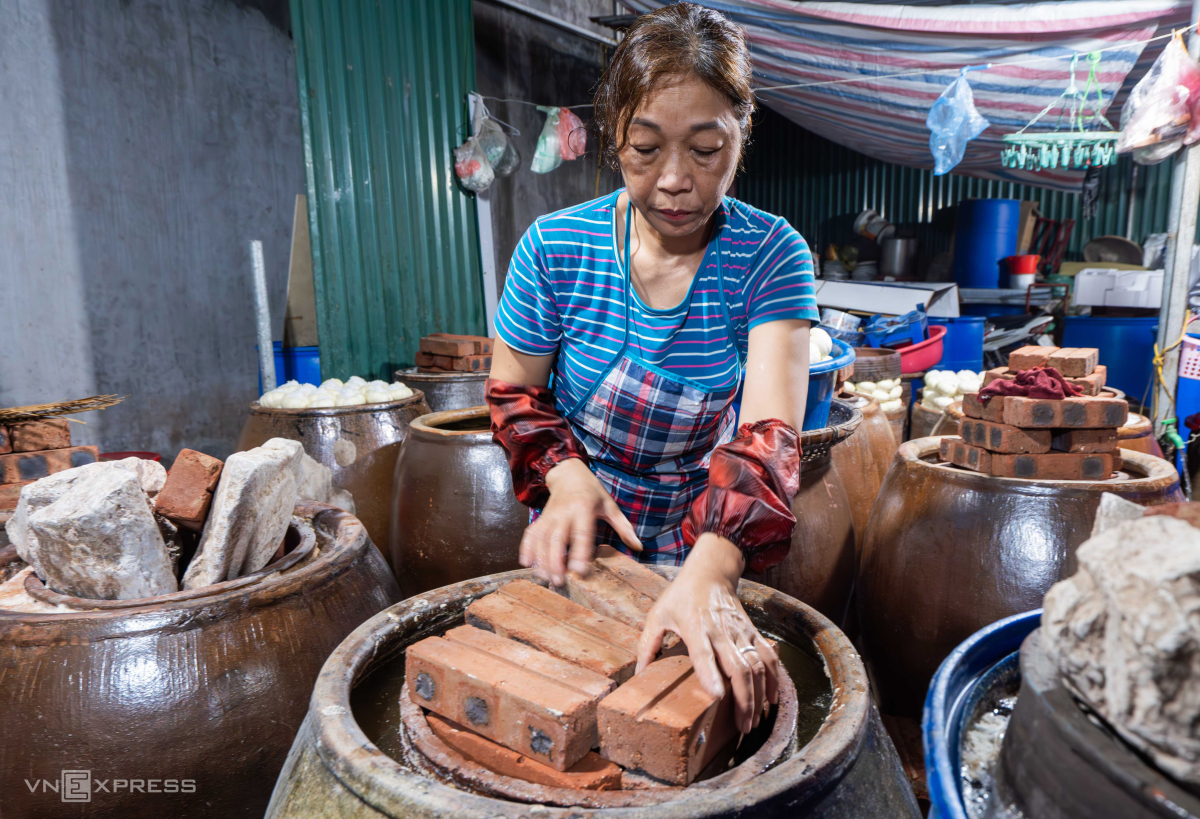
The pickled melon jars are weighted down with stones or bricks, totaling 50-60 kg, to ensure the melons remain submerged in the brine. Every 1-2 days, more brine must be added to prevent the melons from spoiling or turning dark.
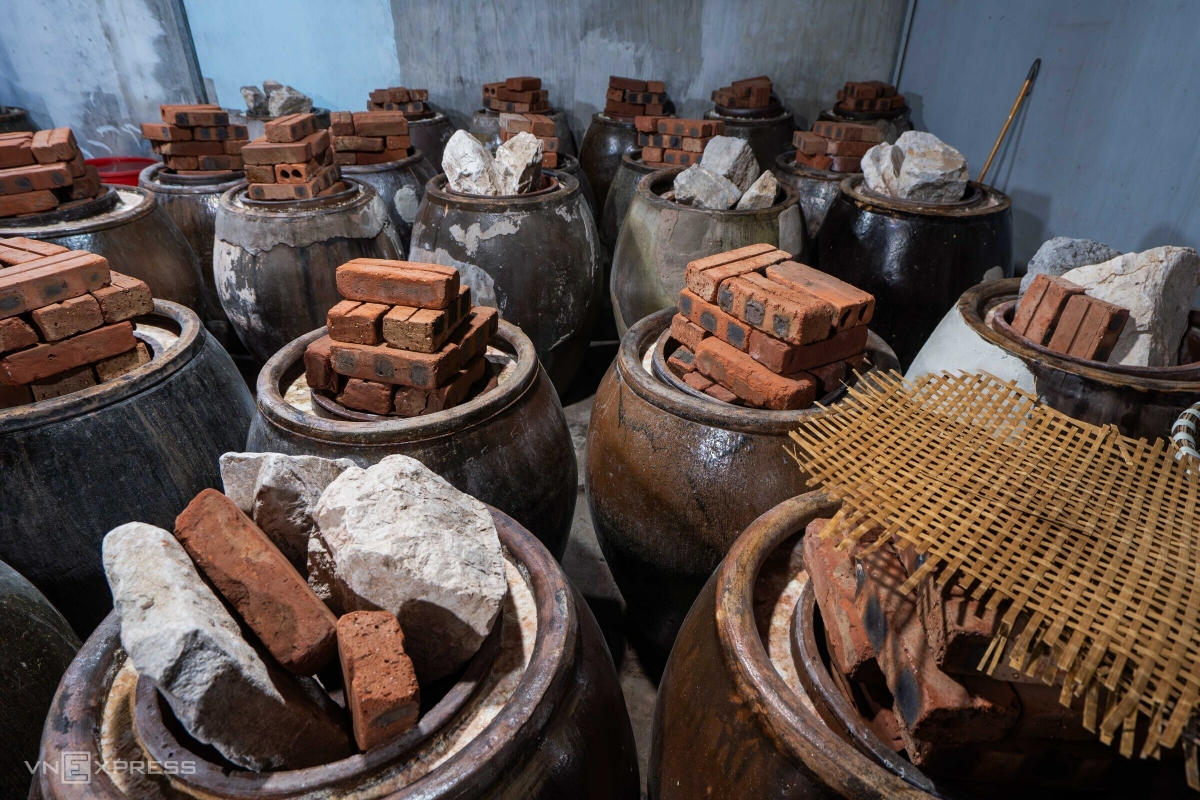
In a 200 square meter space, Mr. Dat’s family has nearly 100 jars of various sizes. The largest jar can hold up to 120 kg of melons.
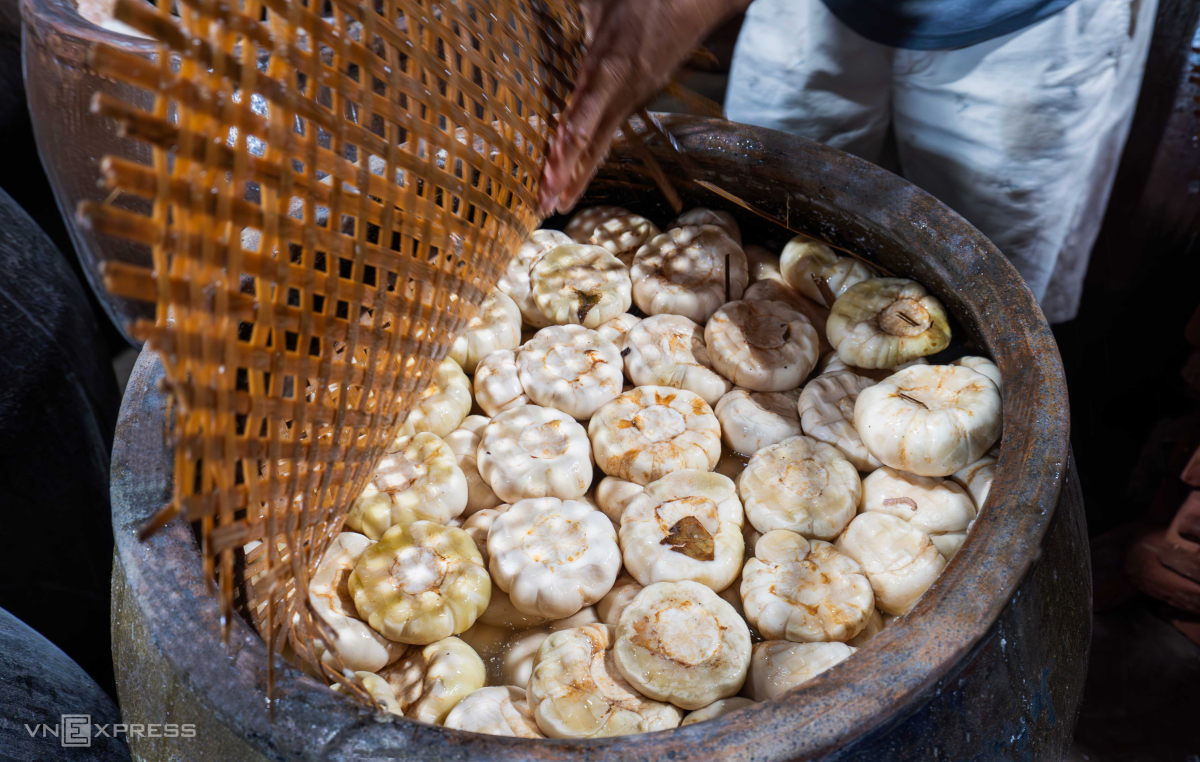
After several days of pickling, the bitter melons shrink in size and become very salty. At this stage, they need to be further processed before they can be consumed.
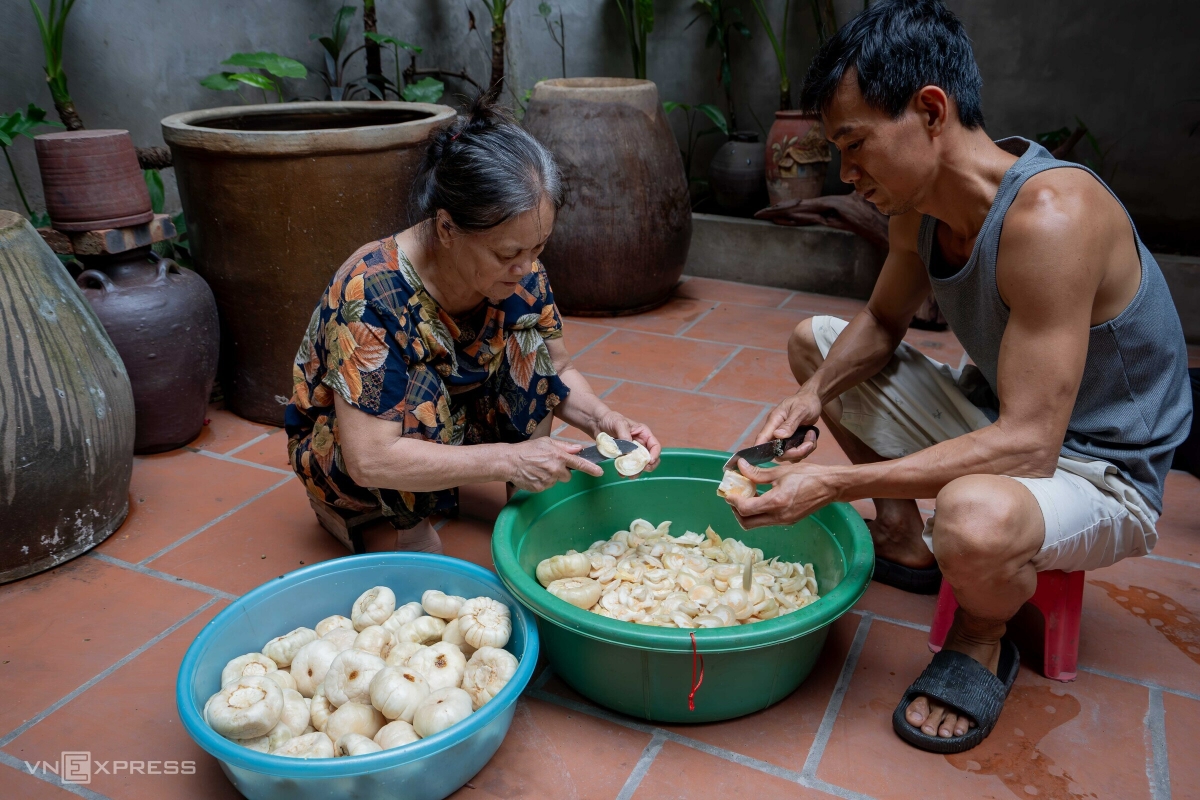
The pickled melons are then removed from the brine, sliced, deseeded, and mixed with spices. Mr. Dat’s family produces 50-100 kg of this processed product for the market daily.
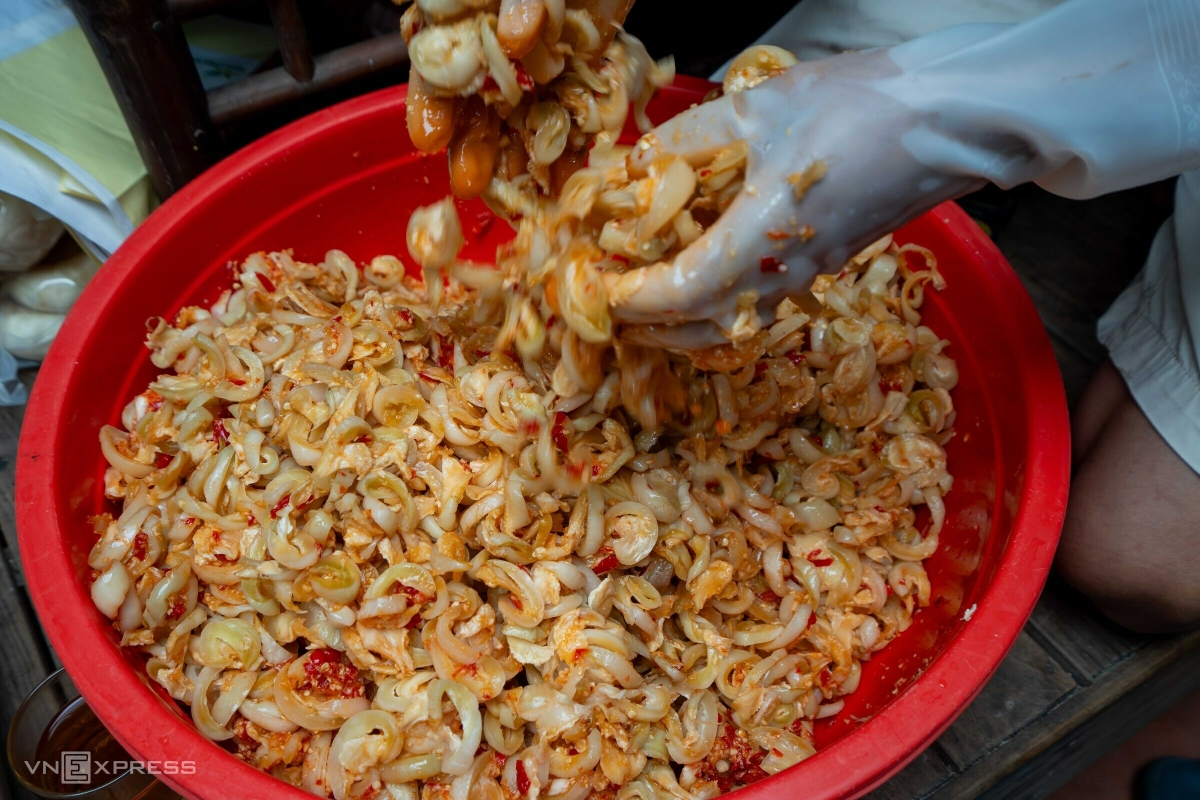
The melons are mixed with garlic and chili and then thoroughly blended by hand for 5-10 minutes to ensure an even distribution of flavors. “I used to be a chef, so I use my knowledge to adjust the proportions of fish sauce and salt to maintain consistent quality,” Dat shared.
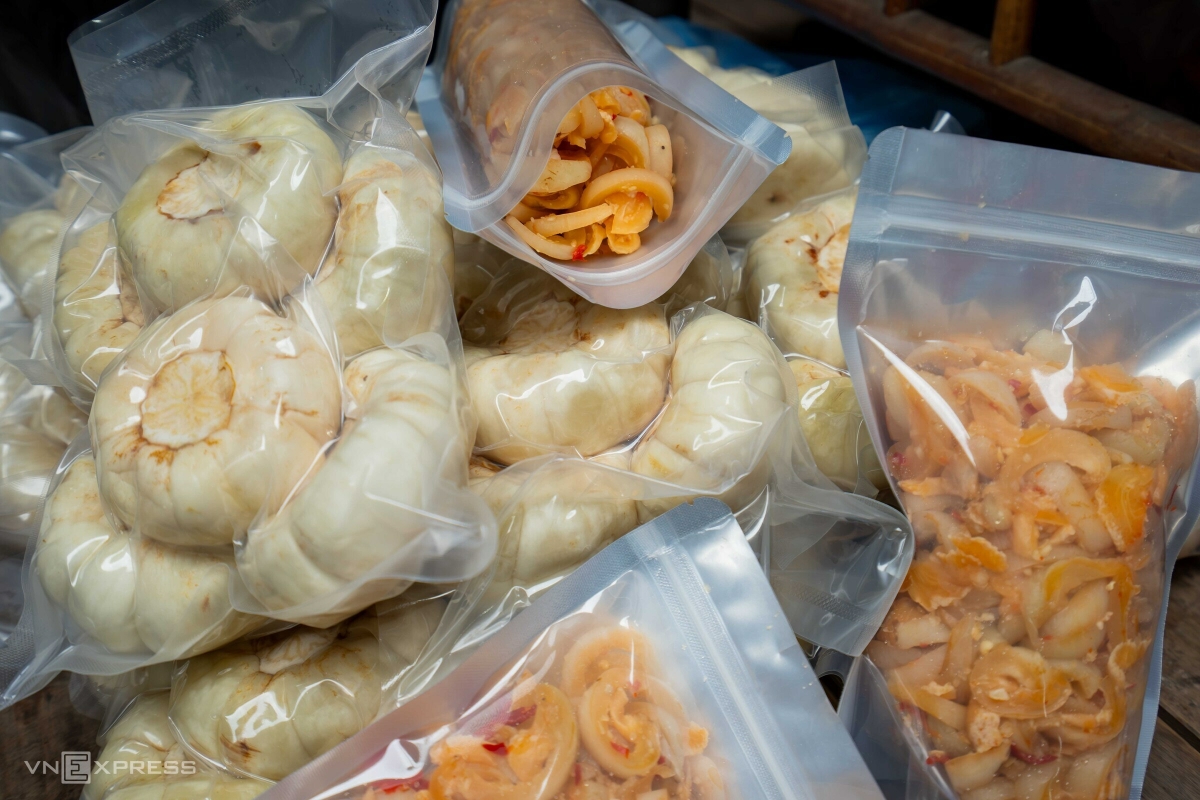
Dat noted that the pickled melons are best consumed within 2-3 days, which is why most of their customers are from Hanoi. The product is vacuum-sealed in plastic bags for distant customers. Each kilogram of pickled bitter melon is priced at 60,000-80,000 VND, while the garlic and chili variety costs 200,000 VND per kilogram.
The Ultimate Thai-Style Ice Cream and Sticky Rice Experience in Ba Dinh District’s Historic Collective Quarter, Hanoi.
For many Hanoi locals, the ice cream and Thai dessert shop at 118 A5 Tap The Giang Vo holds a special place in their hearts. This unassuming spot has become a beloved destination for those seeking a sweet escape, with its unique offering of delicious treats. An unforgettable experience awaits, and we invite you to discover this hidden gem and indulge in a world of flavorful delights!
The Capital’s Delights: A Taste of Hanoi’s Top 20 Specialties.
“Hanoi is renowned for its delectable array of local specialties, offering a culinary journey like no other. Immerse yourself in the city’s vibrant food scene and uncover the 20 best Hanoi specialties that will tantalize your taste buds and leave you craving more. From mouth-watering dishes to unique delicacies, your taste buds are in for a treat as you explore the capital’s culinary delights.”



























